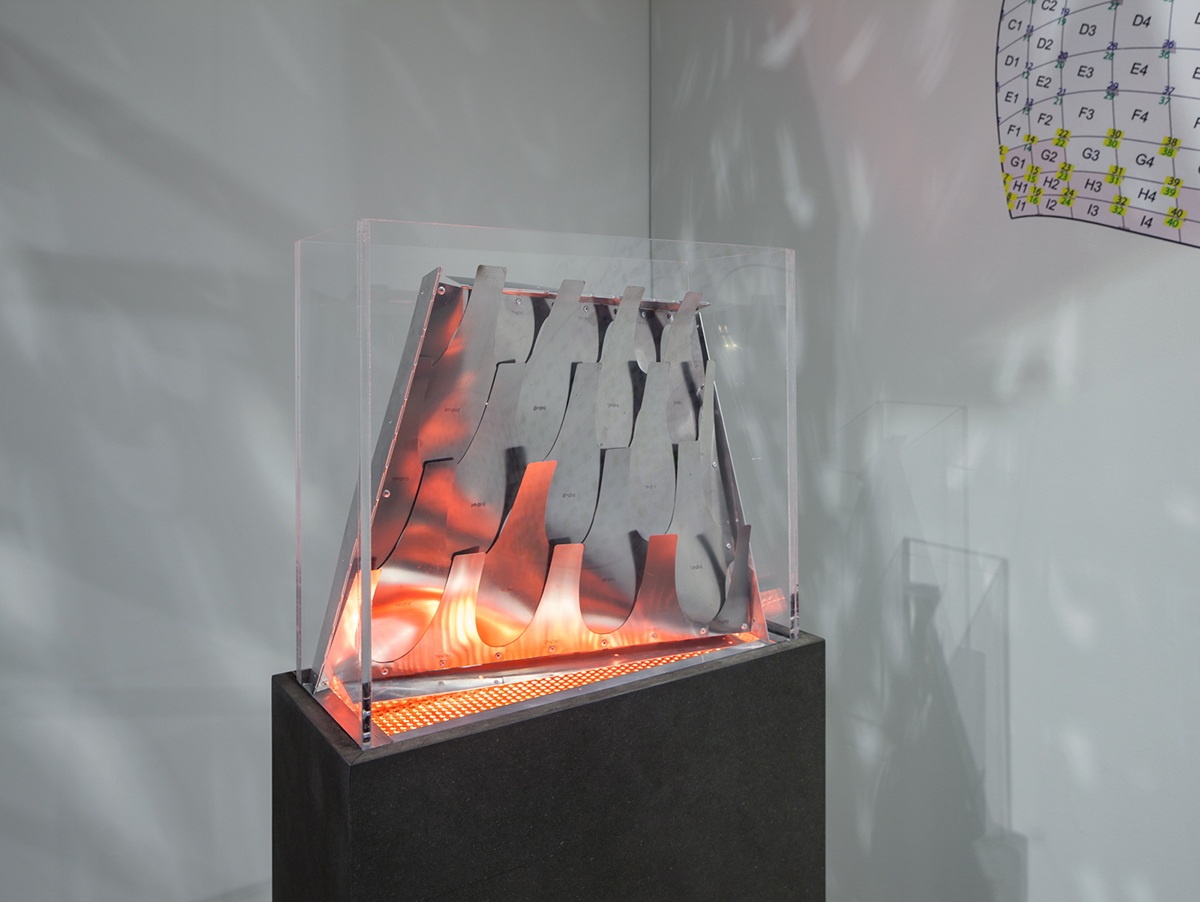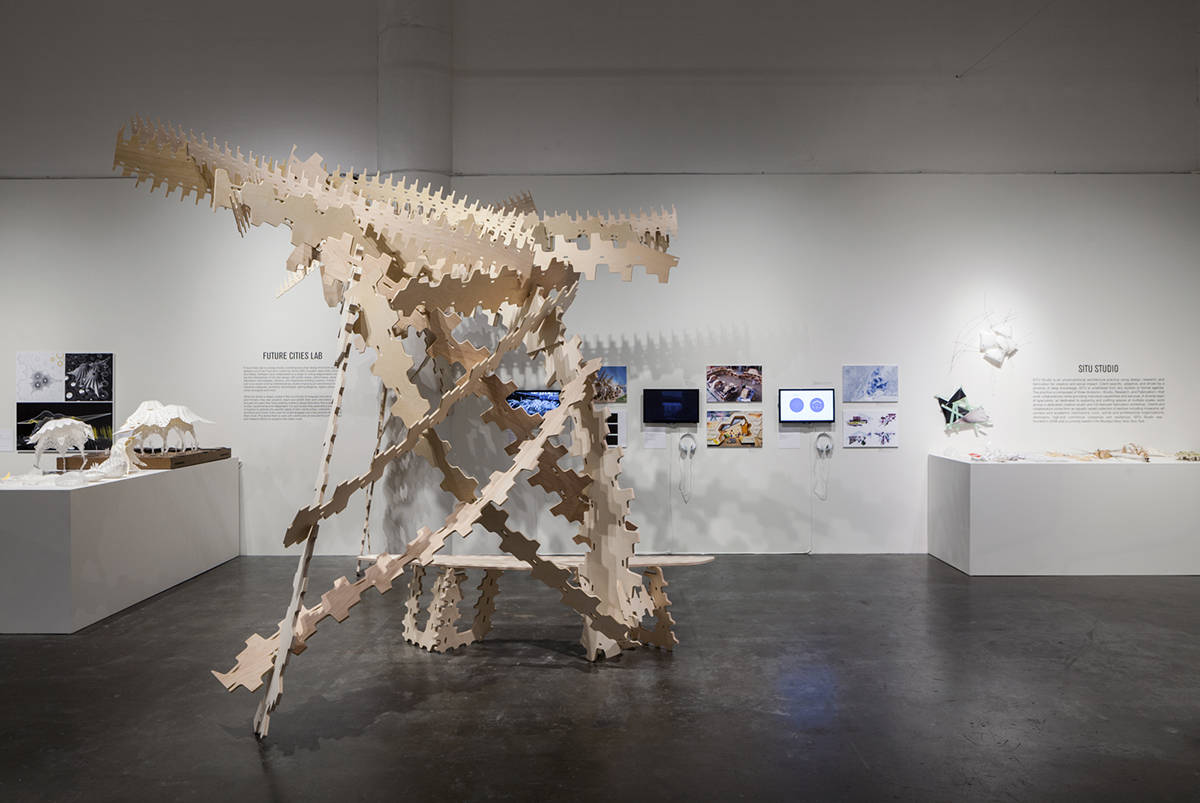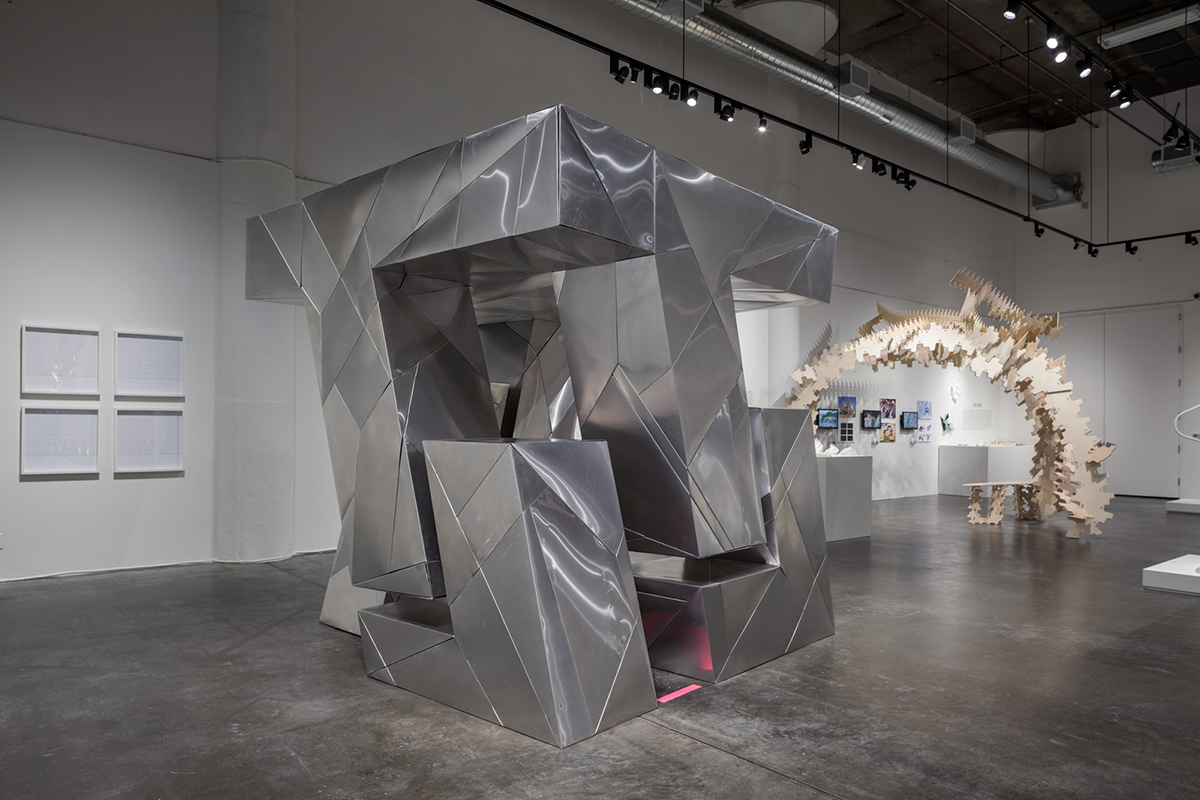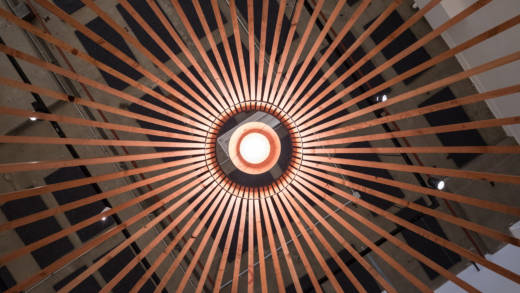The pavilion is an architectural outlier. Traditionally a freestanding, temporary structure, it can provide utility or shelter, but more often than not its true purpose is pure spectacle. Imagine the architectural equivalent of statement jewelry. But Architectural Pavilions: Experiments and Artifacts, now on view at San Francisco’s Museum of Craft and Design, pinpoints an ulterior, altogether invisible functionality for these unconventional structures: architects’ testing grounds.
Guest curator Mariah Nielson follows the evolution of seven architectural practices from early pavilions into larger commissions and projects, each time identifying an experimental material or method that worked its way into a more permanent form.

A prime example: SITU, a studio based in Brooklyn, shows part of one of their earliest projects, Solar Pavilion 2, an improvised assembly of notched laminated plywood. Like a set of wacky, zig-zagged Lincoln Logs, any one part of the structure can be notched together with any other part of the structure. The studio still uses this organizational flexibility and emphasis on organic, community-driven construction to inform their practice today, even while tackling big picture projects like New York City’s rapid growth.

Guiding us through these stories of architectural evolution, trial and error are plenty of visual aids — handmade models, full-sized structures, digital renderings, and videos of production and assembly. Looking at architectural models will never not be interesting, and there’s plenty of intricate miniatures — especially from London-based Carmody Groarke — to fulfill that desire.

And even when the visual elements in Architectural Pavilions become a bit obtuse, the two full-sized pavilions commissioned for the exhibition provide welcome tangibility. Site-Specific Pavilion made by a group of UC Berkeley architecture students studying under Lisa Iwamoto of IwamotoScott, is the gleaming manifestation of a seemingly impossible object. The angular top half of the pavilion seems to hover, almost magnetically, above the lower half. Upon closer inspection, slim lines of aircraft cable provide the tension that makes this optical illusion possible. It’s thrilling and a bit unnerving.




